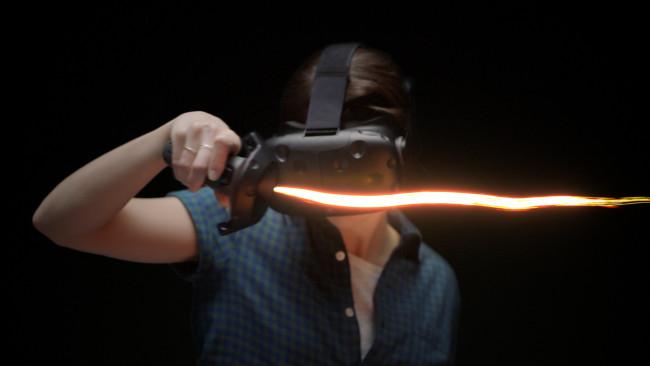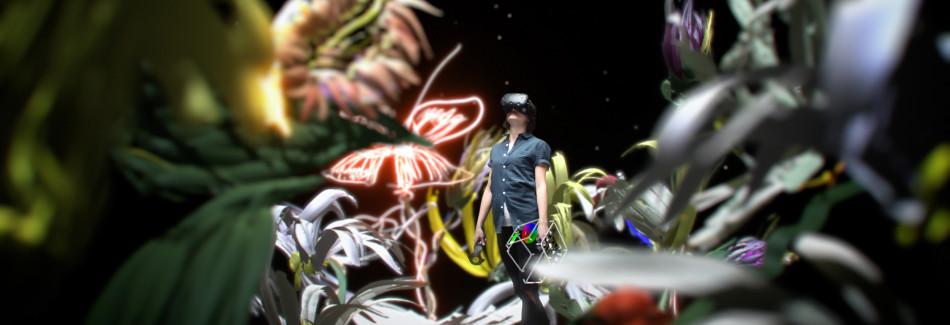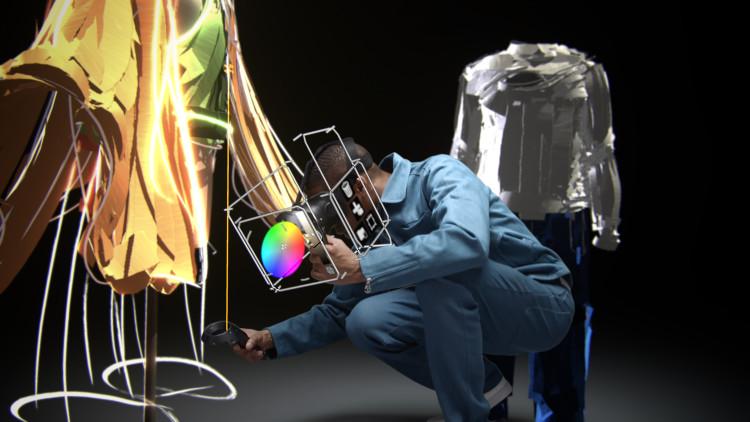 Artists love to play with new tools, and push the boundaries of those tools. It should come as no surprise then that the arts community has embraced advanced technologies just as soon as, and sometimes even slightly before, they are ready to use. 3D printing has proved a particularly fertile ground for the exploration of the creative idea and hardly a day goes by when somebody isn’t doing something truly creative with a technology that can also be used for precision engineering. It’s one of the things that makes all of these advanced machines and methods so fascinating – their ability to remind us what da Vinci always knew: there isn’t really a gap between art and science.
Artists love to play with new tools, and push the boundaries of those tools. It should come as no surprise then that the arts community has embraced advanced technologies just as soon as, and sometimes even slightly before, they are ready to use. 3D printing has proved a particularly fertile ground for the exploration of the creative idea and hardly a day goes by when somebody isn’t doing something truly creative with a technology that can also be used for precision engineering. It’s one of the things that makes all of these advanced machines and methods so fascinating – their ability to remind us what da Vinci always knew: there isn’t really a gap between art and science.
In a show created collaboratively among artists Adham Faramawy, Elliot Dodd, and Jessy Jetpacks, all currently or future alumni of the UK’s Royal Academy Schools, virtual reality is not only the mode for displaying the works of art, but the environment in which they were created as well. The products of this otherworldly expression will be presented in an exhibition titled Virtually Real that will run briefly from January 12 to January 14, with a special opening preview to be held for Friends of the RA on January 11.
What the lucky folks who get to go to the exhibit will undergo is more than just a walk through, but rather a totally immersive experience in which they don the VR headset and interact with works of art in their digital form before walking through the physical versions printed in 3D. While examining the VR works, playback technology will allow the viewer to look back at the artists’ process and then to participate in creating pieces of their own utilizing the Google Tilt Brush.
The Tilt brush looks somewhat like a high-tech handle. It is meant to be held in the hand while wearing a VR headset and it can then be used to paint, sculpt, construct, and conglomerate in the air in front of you. It’s simply as close to magic as my mind can imagine. The light works through 3D space as a canvas. This is what Vincent van Gogh would have done if he’d had Harry Potter’s wand.

 While the utilization of such high-tech modes of creation may seem to be simply adding another tool to an already creative mind, the artists themselves have expressed the way that the technique actually impacts the development of ideas and the very process of viewing the world to which the pieces respond. The most surprising aspect of creating in this manner is the loss of the presence of the artist’s body. In an interview, the three discussed the strange experience of looking down while immersed in a VR environment and realizing that the body isn’t present. It isn’t something you would think the digitally savvy would find as disarming, and yet their discussion of it makes you realize how much art has been an embodied practice. Elliot Dodd, 2016 graduate from RA Schools, explained the feeling:
While the utilization of such high-tech modes of creation may seem to be simply adding another tool to an already creative mind, the artists themselves have expressed the way that the technique actually impacts the development of ideas and the very process of viewing the world to which the pieces respond. The most surprising aspect of creating in this manner is the loss of the presence of the artist’s body. In an interview, the three discussed the strange experience of looking down while immersed in a VR environment and realizing that the body isn’t present. It isn’t something you would think the digitally savvy would find as disarming, and yet their discussion of it makes you realize how much art has been an embodied practice. Elliot Dodd, 2016 graduate from RA Schools, explained the feeling:
“As people who deal with digital stuff, you think you’re ready for a digital sensation, and you’re just kind of going to be analytical about something that’s happening but it’s shocking and you get a genuine feeling in your stomach…you feel actually afraid.”
Jetpacks and Faramawy also expressed wonder at the realization that instead of seeing themselves create, they instead had to envision themselves as the thing that is being created: an entirely new way to approach art made possible for the first time without an altered state of mind.
The entire exhibit will take place using HTC Vive platform, which allowed the artists to explore hundreds of different worlds, with very different physics. The results are beautifully intriguing, Jetpacks still wrestles with the question of whether something created in this manner can achieve the sublime, something artists have often held to be the achievement of some type of much greater than technical perfection. It’s a question that art historians will one day pronounce upon, but for now this exhibit, and other experiments in this realm, are paving the pathway for asking the question at all. Discuss in the Virtually Real forum at 3DPB.com.
Subscribe to Our Email Newsletter
Stay up-to-date on all the latest news from the 3D printing industry and receive information and offers from third party vendors.
You May Also Like
3D Printing News Briefs, April 27, 2024: Research, Digital Dentistry, Cycling, & More
We’re starting today’s 3D Printing News Briefs with some research into 3D printed luminescent quantum-dot polymer architectures and free-form laser beam shaping, and then on to an open source 4-axis...
HP & INDO-MIM Collaborate to Boost Metal 3D Printing in India
HP Inc. and INDO-MIM, a US- and India-based supplier of metal injection molding (MIM) powders and contract manufacturer, have announced that the two companies will collaborate to accelerate additive manufacturing...
3D Printing News Briefs, February 17, 2024: Shot Blasting, Service Bureaus, & More
In today’s 3D Printing News Briefs, we’re starting out with post-processing, as SKZ Würzburg is using a shot blast system from AM Solutions for its research. Moving on to business,...
3D Printing News Unpeeled: Not That Kind of Organ 3D Printing
GKN Aerospace will create a 150 jobs in Trollhattan Sweden with an investment of $60 million part of which comes from the Swedish Energy Agency’s Industriklivet initiative. The investment will...






























